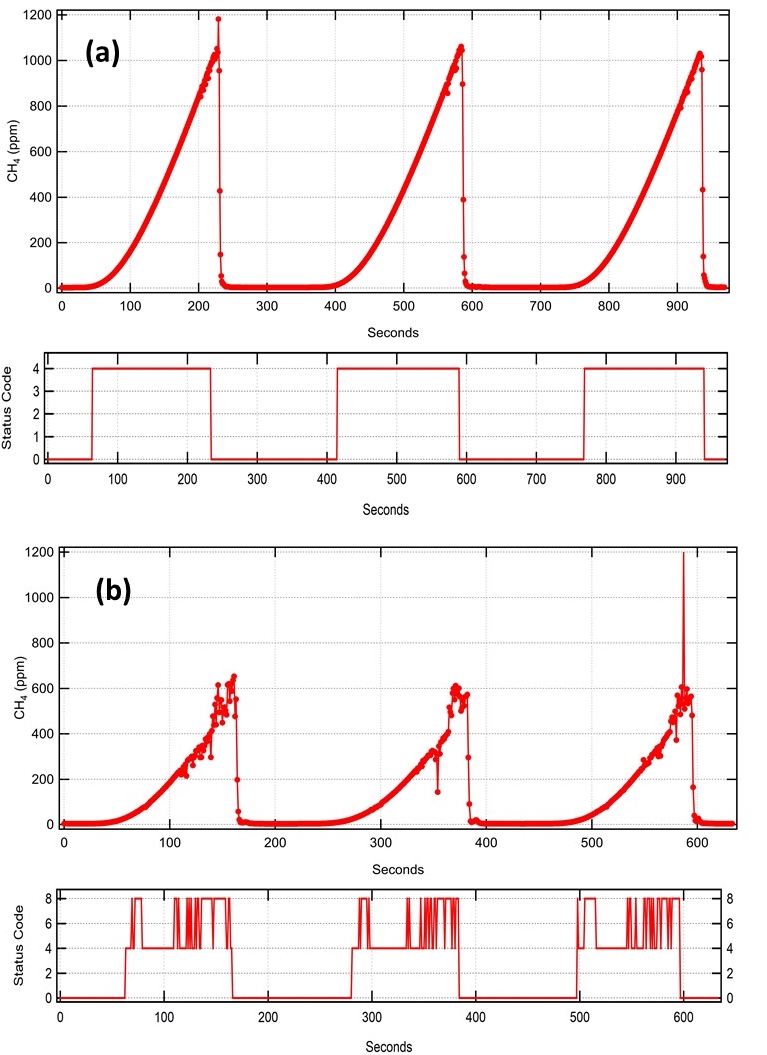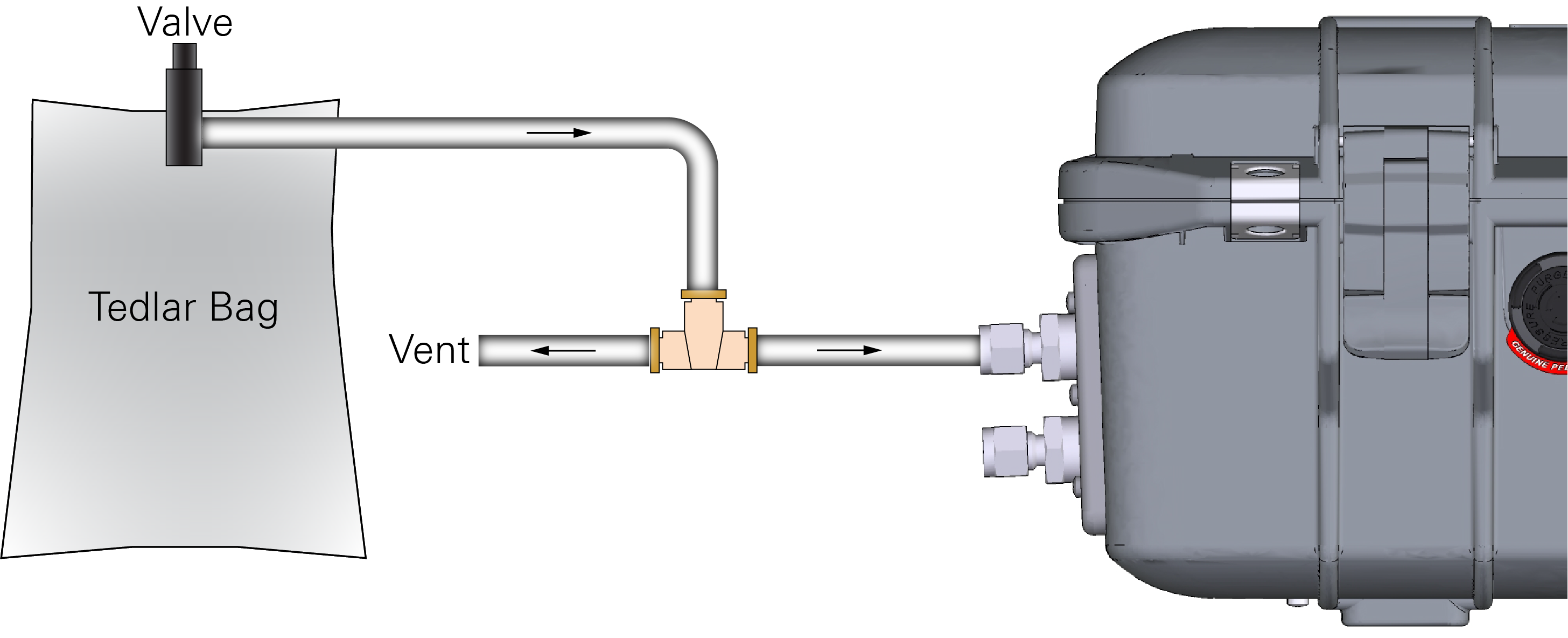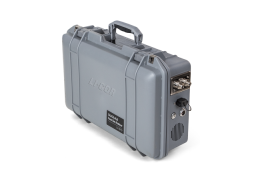Measuring high CH4 concentrations
Printable PDF: Measuring high CH4 concentrations
(7810-Note_Measuring-High-CH4-Concentrations_19195.pdf)
Download this content as a pdf that can be saved to your computer or printed.
The LI-7810 is a CH4 analyzer designed to measure atmospheric methane concentrations with very low noise across the factory tested measurement range 0.1 – 100 ppm. At near ambient concentration of 2 ppm (2000 ppb) CH4 in air, the instrument precision is 0.25 ppb (1σ) or approximately 1/10,000. However, in some measurement scenarios such as measurements above wetlands, manure lagoons and landfills the methane concentration near the surface may be much higher than the specified upper concentration limit. In this note we highlight different measurement approaches that expand the measurement capabilities to higher concentrations than the specified range of 0.1 – 100 ppm. With these approaches it is possible to measure much higher concentrations. We also discuss performance impacts of high concentration measurements, and a testing approach to determine the maximum range for a given unit.
Measurement approaches for high CH4
We describe basic approaches for chamber measurements and small volume injection measurements.
Chamber measurements
If the LI-7810 is being used with a chamber such as the LI-COR Smart Chamber, it is possible to accommodate the high flux rate and concentration measurements by manipulating the volume-to-surface area ratio of the setup. This technique is discussed in detail in Technical Note #136 (Measuring High CO2 Flux Rates with the LI-8100A Automated Soil CO2 Flux System). Although it was developed for CO2 measurements, the principle applies to CH4 as well. With this technique, measurements of very high CH4 flux rates can be accomplished without saturating the absorption spectrum.
Small volume injection measurements
An alternative approach for high concentration measurements is to use the small volume injection approach. This measurement technique is discussed in the application note titled Measuring The Methane Concentration Of Small Air Samples With The LI-7810. It presents two different approaches for injection measurements. Using the closed loop approach discussed, it is theoretically possible to even measure pure CH4 (100%).
Performance at high CH4 concentrations
The LI-7810 measures a selected absorption line from the CH4 absorption profile with very high resolution. That means the signal processing has several points along the absorption line to do the fitting, this results in very low uncertainty on the computed CH4 concertation in air. At high concentrations of CH4 some of the points on the absorption line get saturated. However, the signal processing can avoid the saturated points in the computation and still provide a reliable CH4 concentration. The diagnostic status code (code=4) for these measurements indicates that some points from the absorption line have been skipped from the computation. The signal processing can continue to use the non-saturated absorption points until it is no longer possible.
All LI-7810 units at LI-COR are tested up to the 100 ppm range before they leave the factory. In addition, we have tested a few units to evaluate their dynamic range. A case study of a few instruments shows:
- Analyzer can measure much higher concentration than the specified 100 ppm. In some cases measuring up to 1000 ppm. See Figure 1.
- The maximum concentration before saturation varies from unit to unit.
- There may be transition points as one or more saturated points are being excluded from the computation. During these transitions the concentration fluctuates.
- The interference on CO2 measurement increases with higher CH4. Therefore, at high CH4 one should carefully screen the CO2 measurement.

Testing the working limit
Based on the case study above, one can assess the actual measurement range and saturation point for each unit. Fill a valve-equipped Tedlar sampling bag (e.g., Cole-Parmer Tedlar Bag) with a high concentration of CH4 (2-3%) in air. The outlet of the bag is connected to the analyzer inlet using a T at the inlet (see Figure 2) to allow a slow introduction of the high CH4 concentration. Then slowly open the valve so the high CH4 air is introduced to analyzer. The readings will steadily increase until the instrument is no longer able to compute reliable concentrations as more and more points on the absorption line become saturated. This will be indicated in the concentration fluctuating several percent and the status code showing additional errors (code >16). The rate of increase will be determined on how wide the valve is opened. The recommendation is to start with just a small opening and adjust that if the increase in concentration is too slow.

